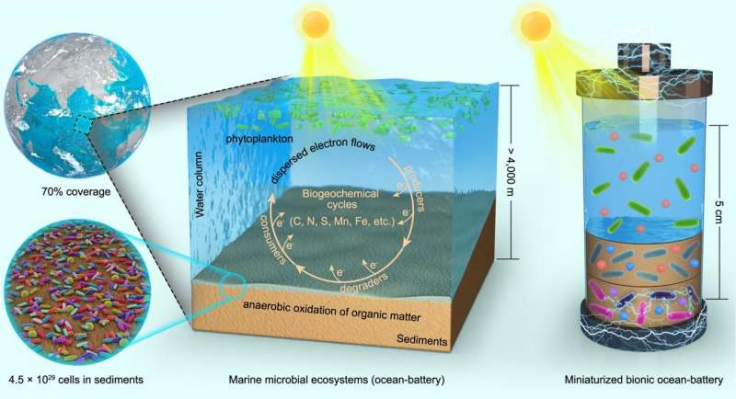A group of Chinese scientists believe a new technology – bionic ocean battery – could use the ocean as a green, living energy generator. The researchers achieved a milestone by using four types of microorganism, including algae, into a battery-like device filled with seawater, wherein the microorganisms converted sunlight to sugar and used the sugar to produce clean electricity.
Bionic Ocean Battery
The battery produced a maximum 380 microwatts in power. It operated stably for more than a month. The scientists, with the State Key Laboratory of Microbial Resources, Qingdao Institute of Bioenergy and Bioprocess, believe this makes the device suitable for ultralow-power facilities. They highlighted that the battery performance cannot match that of semiconductor-based photovoltaics. In fact, it reveals a more environmentally compatible and potentially more cost-effective way of generating electricity directly from light.

Zhu Huawei, the lead researcher, said the miniaturized bionic ocean battery was inspired by marine microbial ecosystems. He highlighted that algae such as cyanobacteria (blue-green algae) are called primary producers in marine microbial ecosystems. Zhu explained they harvest solar energy and fixed carbon dioxide to produce organic matter. As such, solar energy is transferred to electrons and stored in organic matter. Some organic matter, after breaking down, is deposited onto the seabed sediment where they become nutrition for microorganisms and have a role in their metabolism.
The researchers outlined that solar energy is the main driving force in these biogeochemical cycles. They built a special device to boost performance and improve efficiency in one battery. It should be noted that the battery's four-species microbial community mimics the ecological structure of marine microbial ecosystems – a primary producer, a primary degrader and two ultimate consumers. The four microbial species, together, with different functions achieve photoelectric conversion.
Alternative Electrical Energy Source
Zhu believes the four-species system is optimal in terms of power density and stability. He said maintaining a complete three-level ecological structure is an efficient way for bio-photoelectric conversion. The lead scientist reckons the battery could serve as alternative electrical energy source for ultralow-power facilities like the environmental sensors of the Internet of Things. He pointed out that a single miniaturized bionic ocean-battery generating hundreds of microwatts is sufficient to support the small facilities. This battery could even be operated on Mars as long as water, carbon dioxide and minerals are available.
Now, the researchers are looking for ways to boost the power output. They established one strategy which involves stack bio-solar cells for greater voltage and output for higher-powered facilities.









